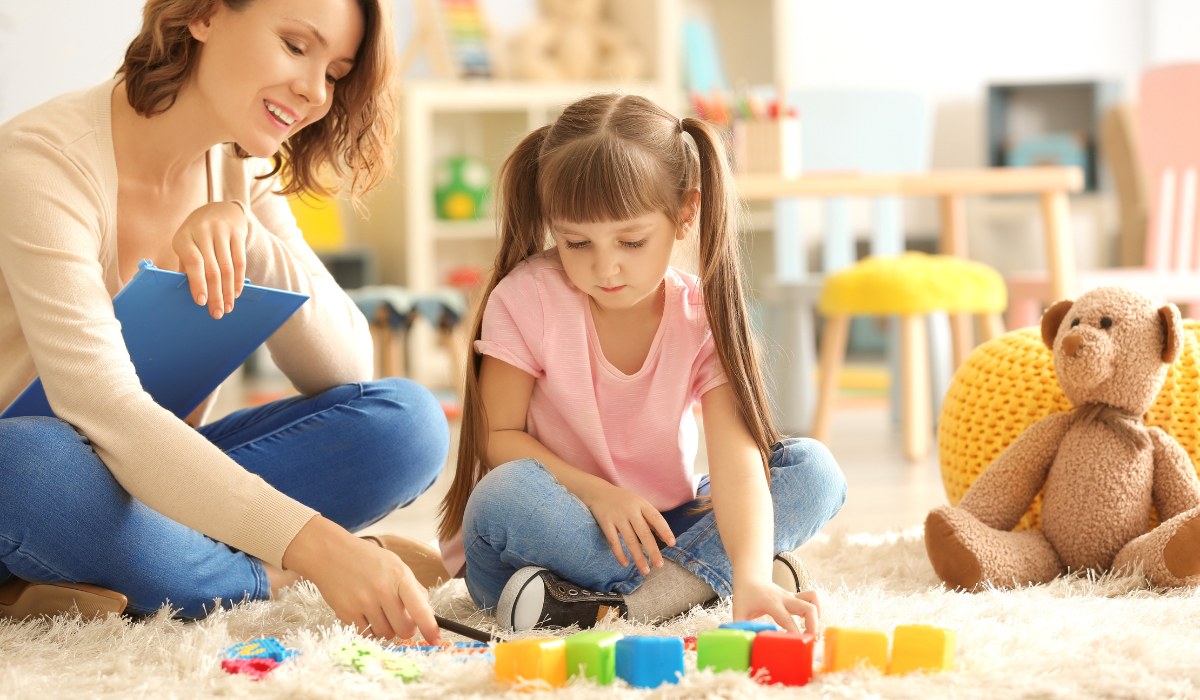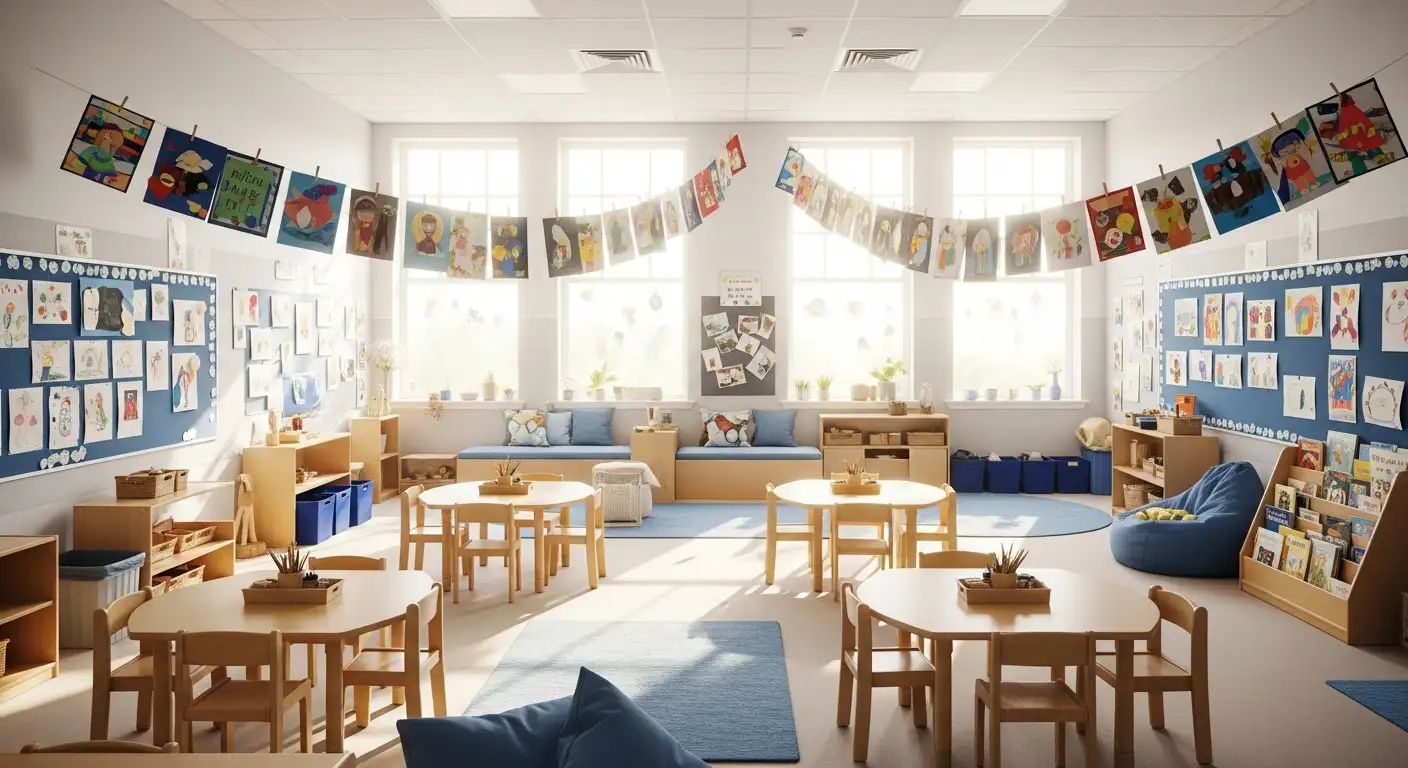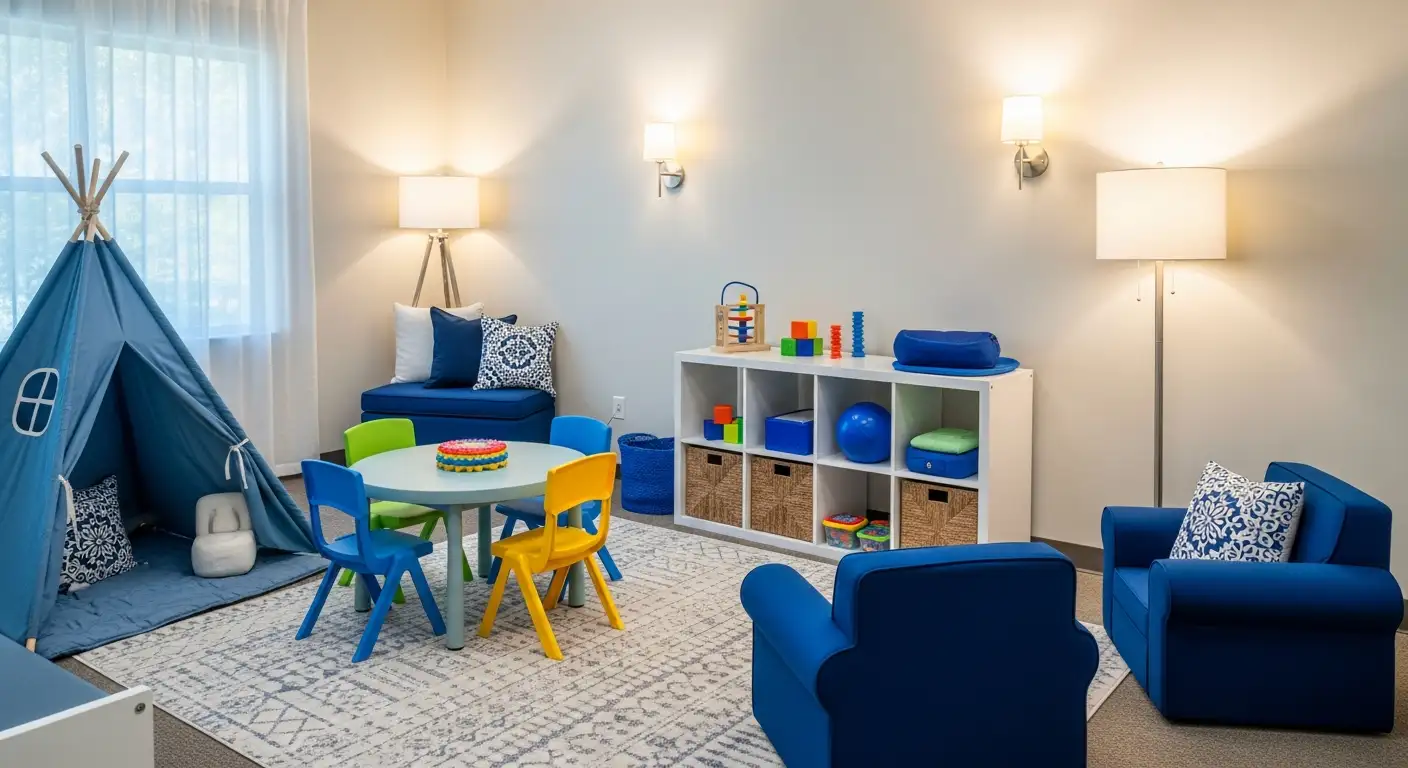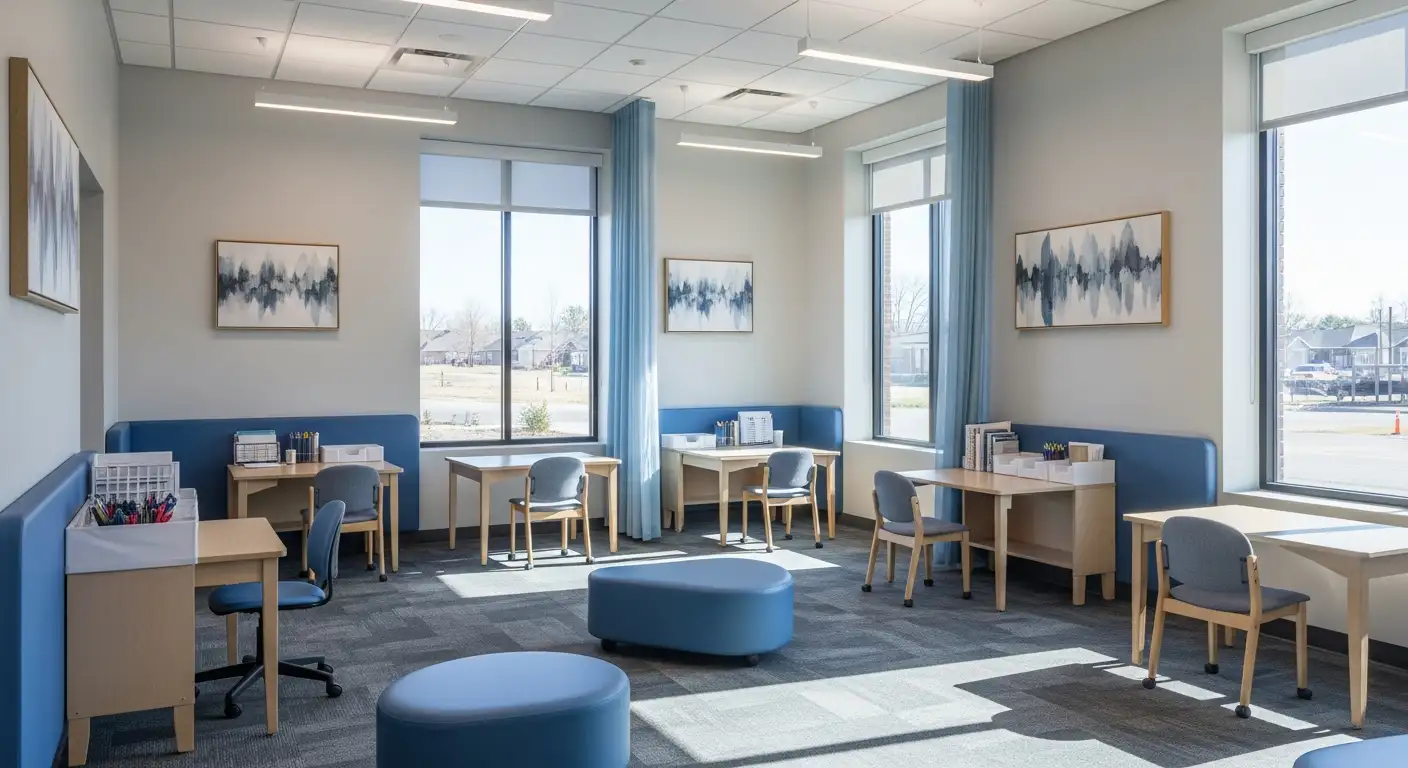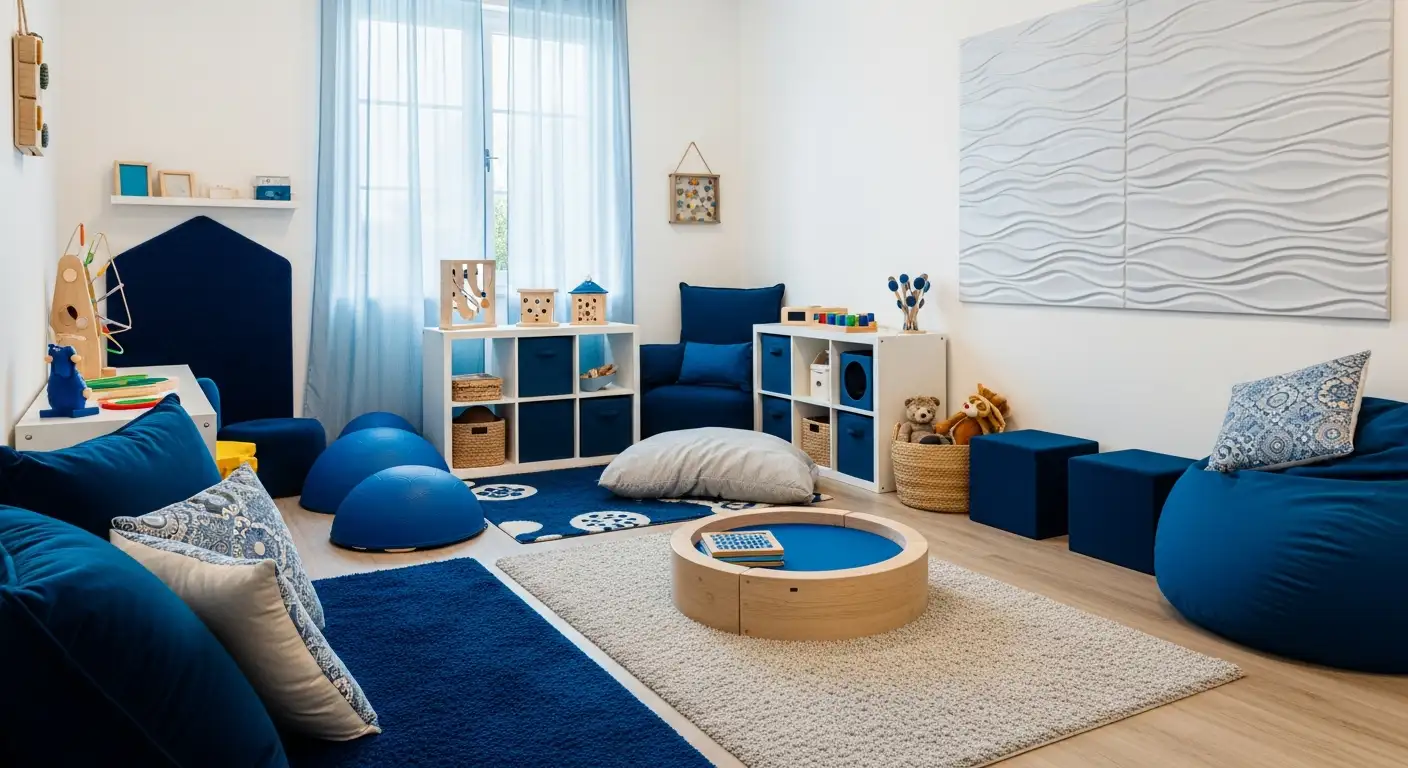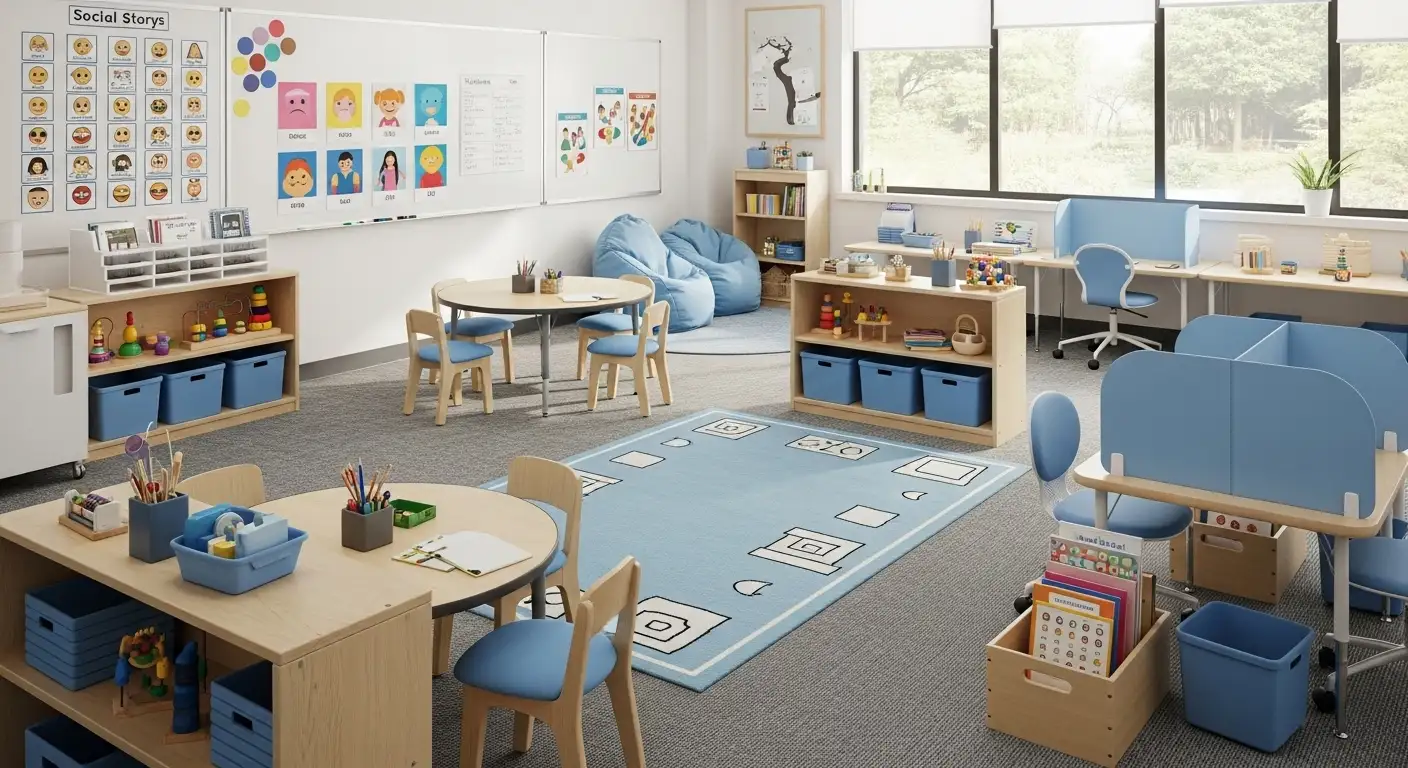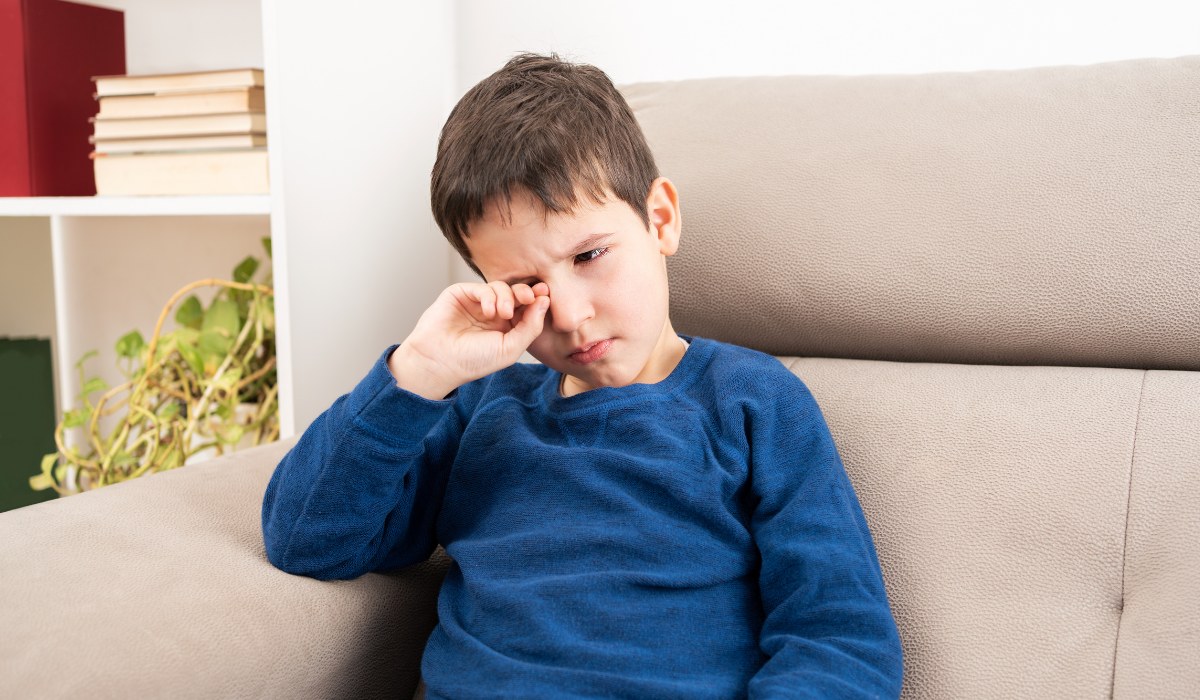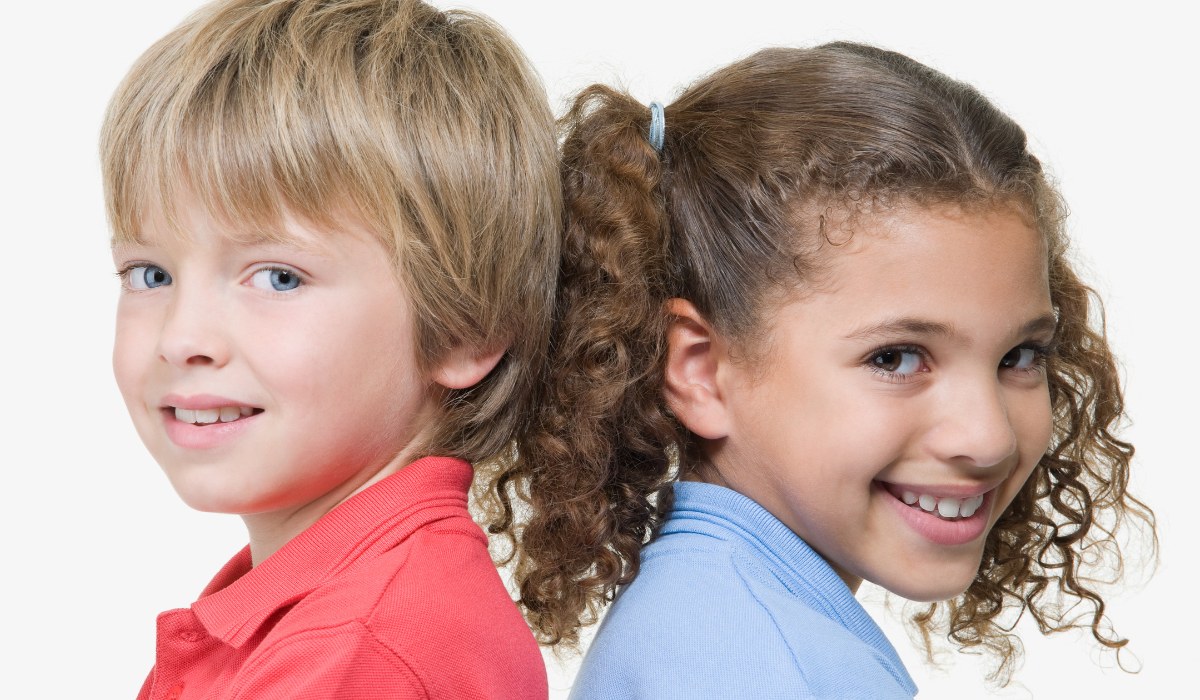The Benefits of Inclusive Sports for Autism Participants
Transforming Lives: How Inclusive Sports Empower Children with Autism

Unlocking Potential Through Physical Activity
Inclusive sports programs offer enormous benefits for children and adolescents with autism spectrum disorder (ASD), providing not only physical health improvements but also critical advancements in social skills, emotional regulation, and overall quality of life. By tailoring activities to sensory and motor needs, these programs create supportive environments that foster confidence, social engagement, and resilience, marking them as vital complementary therapies to traditional autism interventions.
The Physical and Behavioral Benefits of Exercise for Autism Participants

Exercise interventions and social interaction improvements
Physical exercise programs lasting around 48 weeks have demonstrated significant reductions in social interaction difficulties among children and adolescents with autism spectrum disorder (ASD). Regular engagement in structured activities markedly improves social responsiveness, eye contact, and peer interactions, facilitating better social integration.
Reduction in ASD-associated symptoms through physical exercise
Exercise has been shown to alleviate several core symptoms associated with ASD. These include decreasing attention deficits, reducing emotional reactivity, and lessening stereotypical verbal and motor behaviors. Additionally, sleep disturbances common in 50–80% of children with ASD notably improve following prolonged physical activity.
Impact on motor deficits and sleep disorders
Motor coordination deficits and sensory processing challenges, often present in children with ASD, can limit participation in physical activities. Structured exercise programs tailored to their needs help enhance motor skills, sensory integration, and overall physical health. Improvements in motor performance are complemented by better sleep quality, highlighting the dual physical and behavioral benefits of these interventions.
Exercise thus serves as a valuable complementary therapy for children and adolescents with ASD, boosting social skills and mitigating core and associated symptoms to improve their quality of life.
Structured Exercise Programs as Complementary Therapy in Autism

How can structured exercise programs complement traditional autism therapies?
Regular, structured exercise programs are increasingly recognized as valuable complementary therapies for children and adolescents with autism spectrum disorder (ASD). Moderate intensity exercise sessions lasting around 30 minutes twice a week have demonstrated significant benefits when integrated with conventional autism treatments.
Such programs not only improve physical health but also drive meaningful behavioral changes. Research shows notable enhancements in social interaction skills and a reduction in stereotyped verbal and motor behaviors following exercise interventions. These improvements suggest that physical activity helps address deficits in both social and behavioral domains common in ASD.
Additionally, structured exercise supports emotional regulation and attention, further complementing therapies focused on cognitive and social development. Its role alongside established treatments creates a holistic approach that amplifies therapeutic outcomes by directly targeting core and associated ASD symptoms.
By incorporating physical activity tailored to individual needs, structured exercise programs enhance the overall effectiveness of autism interventions, promoting better social responsiveness and reducing challenging behaviors.
Addressing Sleep and Eating Disturbances Through Exercise in ASD

How Does Exercise Improve Sleep in Children with Autism?
Sleep disturbances are common in children with autism spectrum disorder (ASD), affecting between 50% and 80% of this population. Such issues can worsen behavioral and cognitive challenges. Notably, evidence shows that participation in structured exercise programs lasting 48 weeks can significantly enhance sleep quality. Consistent physical activity helps regulate sleep patterns, reduces restlessness, and promotes more restful, longer-duration sleep in affected children.
Can Exercise Improve Eating Behaviors and Related Health in ASD?
Exercise also positively influences eating-related symptoms in children and adolescents with ASD. Studies indicate that physical activity can improve eating disorder symptoms and contribute to healthier cholesterol profiles. This dual benefit enhances not only nutritional status but also overall cardiovascular health, which is critical given that eating challenges often co-occur with autism. Targeted exercise programs support better self-regulation, which may reduce problematic eating behaviors and improve metabolic health.
In summary, regular and prolonged exercise interventions present a promising complementary approach for managing sleep and eating disturbances in children with autism. By improving these areas, exercise helps support broader health and well-being outcomes important for this population.
Challenges to Physical Activity and Motor Coordination in Autism
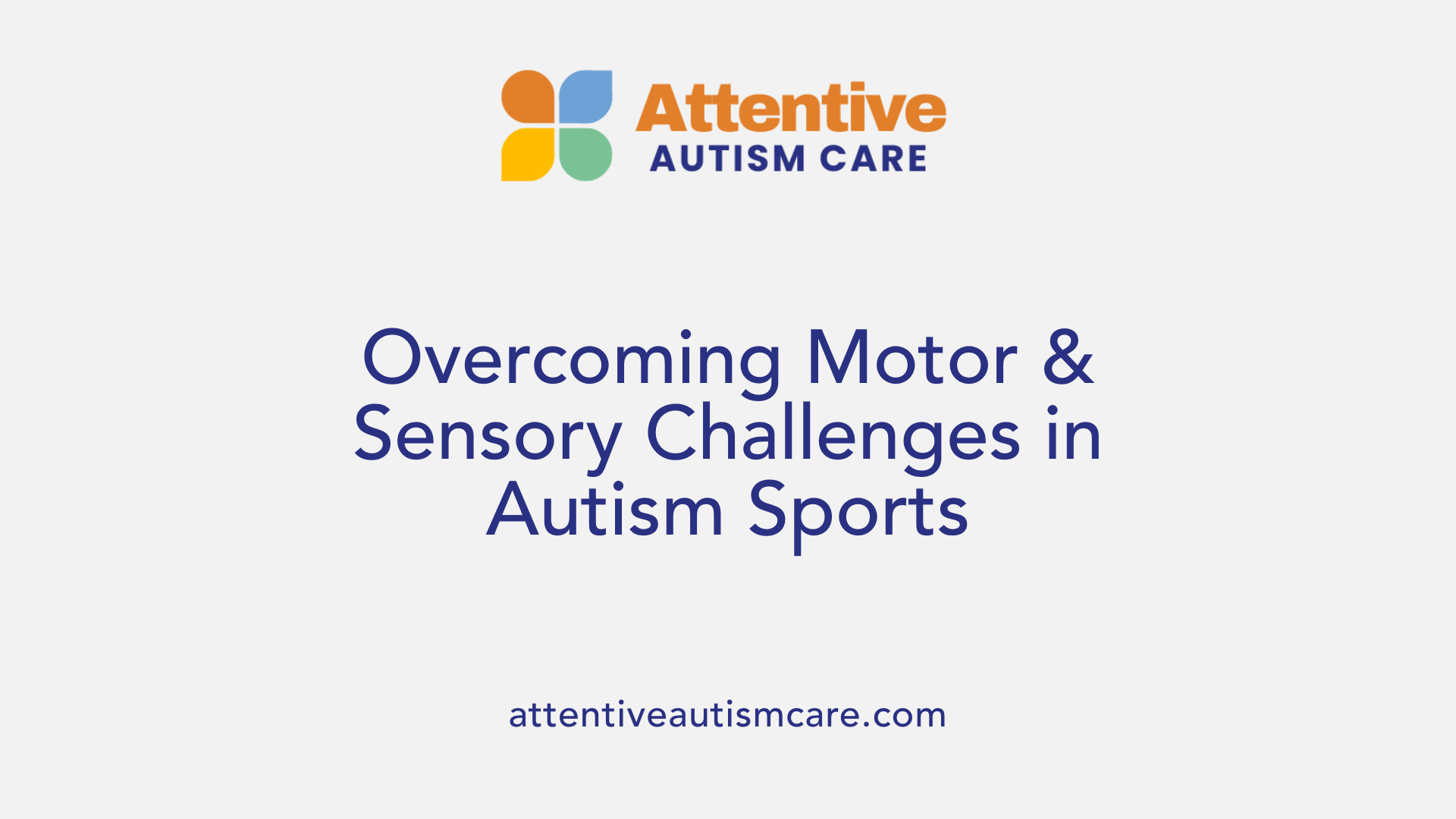
What are the motor and sensory challenges autistic children face in sports participation?
Children with autism spectrum disorder (ASD) often face significant motor coordination deficits that affect their ability to engage fully in sports and physical activities. These difficulties include problems with balance, fine and gross motor skills, and general coordination.
Sensory processing challenges are also prevalent in autistic children, manifesting as hypersensitivity or hyposensitivity to stimuli such as touch, sound, and movement. This sensory integration dysfunction disrupts their ability to process environmental inputs effectively.
Together, these motor and sensory issues create substantial barriers to participation in sports. Poor sensory integration can impair coordinated movement, and sensory sensitivities may cause discomfort or distress in typical sports environments, which are often noisy or crowded.
Moreover, limited social engagement stemming from sensory and motor challenges further restricts their involvement. Without tailored adaptations or interventions, these obstacles reduce opportunities for physical activity and the associated physical and psychosocial benefits for autistic children.
Sensory Integration and Its Role in Autism Sports Programs
How does sensory integration theory inform autism sports interventions?
Sensory integration theory highlights the importance of the brain's ability to process and organize sensory information for effective movement, emotional control, and social interaction. In children with autism spectrum disorder (ASD), sensory processing issues—such as hypersensitivity or hyposensitivity—can impair motor coordination and limit social engagement.
Sensory-based sports training benefits
Sports programs designed with a sensory integration approach focus on vestibular (balance and movement), proprioceptive (body position), and tactile (touch) stimuli. These programs create a sensory-rich environment that supports the child's nervous system in adapting and responding more effectively to sensory input, thereby improving their ability to participate in physical activities.
Improvement in motor skills and social responsiveness
Studies have shown that a 12-week sports training intervention incorporating sensory integration elements led to significant improvements in motor coordination and social responsiveness among children with ASD. Quantitative measures such as the BOT-2 (Bruininks-Oseretsky Test of Motor Proficiency) and SRS-2 (Social Responsiveness Scale) confirmed large effect sizes, indicating substantial gains in both domains. Additionally, these programs foster increased participation rates and peer interactions, helping autistic children develop essential social skills like turn-taking and cooperation.
In sum, integrating sensory elements into sports training provides a powerful, multifaceted approach that addresses core challenges faced by children with autism, promoting better motor function and enhanced social engagement.
Measuring Success: Objective Improvements in Autism Sports Programs
How do quantitative assessments support the effectiveness of sports training programs for autism?
Objective evaluations are crucial in measuring the success of sports initiatives for children with autism. Tools such as the Bruininks-Oseretsky Test of Motor Proficiency (BOT-2) and the Social Responsiveness Scale (SRS-2) provide standardized, quantifiable data. Studies report significant improvements in motor skills and social responsiveness following sensory integration-based sports training, with large effect sizes (Cohen’s d > 0.8), highlighting meaningful changes rather than marginal gains.
What changes are observed in participation and engagement?
Alongside measurable skill improvements, participation rates and engagement in group-based sports notably increase during interventions. Children with ASD display enhanced willingness to participate, improved peer interactions, and greater eye contact. These behavioral shifts are carefully documented through therapist observations and validated by standardized assessments, underscoring the comprehensive benefits of such programs.
This combination of objective motor and social skill gains, paired with higher engagement levels, confirms the effectiveness of structured sensory sports training in supporting children with autism. Such evidence offers a strong foundation for integrating sports into therapeutic approaches aimed at improving both physical and social outcomes.
Behavioral Enhancements Through Inclusive Sports Participation
How do inclusive sports promote social behavior improvements in autistic children?
Inclusive sports programs offer a unique environment where autistic children can improve essential social behaviors. Through participation, children show increased eye contact and more meaningful peer interactions, fostering a sense of belonging and confidence.
Adding sensory elements like tactile, vestibular, and proprioceptive stimuli into the sports training helps autistic children develop social skills beyond physical movement. Specifically, these programs teach turn-taking and cooperation, vital skills that nurture positive social engagement.
This structured approach allows children with autism to practice social rules in a supportive setting, gradually building their willingness to join group activities and enhancing their social responsiveness.
Therapists and standardized assessments have confirmed these behavioral improvements, highlighting the effectiveness of inclusive sports as a complement to other interventions. By embracing sensory-based sports training, children with autism not only gain motor skills but also advance in social competencies crucial for integration within their peer groups.
Creating Autism-Friendly Sports Environments

What accommodations can improve sports participation for children with autism?
Creating autism-friendly sports environments involves thoughtful sensory accommodations to address the common sensitivities experienced by autistic children. Establishing quiet zones within activity areas allows children to retreat and reduce sensory overload when needed. Additionally, minimizing sources of overwhelming stimuli—such as loud noises or bright, flickering lights—fosters a calmer atmosphere conducive to participation.
Visual aids are another critical support, including clear signage, pictures, and social stories that outline instructions and expectations in an easily understandable format. These tools help children anticipate the sequence of activities, reducing anxiety and enhancing comprehension.
Clear and concise communication by coaches and staff plays an essential role. Using straightforward language paired with visual supports ensures children grasp rules and directions effectively.
Individualized approaches are paramount. Tailoring activities to each child's unique strengths, interests, and sensory profile increases engagement. For example, some children may prefer one-on-one instruction or certain types of exercises based on their comfort level and motor skills.
Together, these accommodations create inclusive sports settings that empower autistic children to participate more fully, develop social skills, and build confidence through meaningful involvement.
Sports Participation Rates and Health Outcomes in Autism
Lower participation in sports among autistic children
Children with autism are less likely to participate in sports compared to their non-autistic peers. Several barriers contribute to this disparity, including motor skill difficulties, sensory sensitivities, and social exclusion. These challenges limit their accessibility and engagement in typical community sports activities.
Influence of sports on health and quality of life
Despite lower participation rates, involvement in sports has shown a positive influence on both physical health and psychosocial well-being in children with autism. Physical activities improve motor coordination and reduce core autism symptoms such as stereotyped behaviors. Furthermore, involvement in sports enhances self-esteem, emotion regulation, and social skills, contributing to an overall improved health-related quality of life.
Physical and psychosocial benefits
Beyond physical benefits like improved strength and balance, sports participation helps autistic children develop important social competencies such as cooperation and communication. Individual sports often provide physical health improvements and mental health benefits due to reduced social pressure. Team sports, when adapted appropriately, can foster social inclusion and peer interaction, though they may require additional supports due to social and sensory complexities.
How does sports participation affect health outcomes in children with autism?
Engaging in sports positively influences both physical and psychosocial health in autistic children. Participation supports improvements in social skills and self-esteem, which are critical for quality of life. However, to maximize these benefits, sports programs need to be tailored to accommodate the unique sensory and motor profiles of autistic individuals, addressing the barriers that often limit their engagement.
Barriers to Sports Participation for Autistic Children and Solutions
What barriers impede autistic children’s participation in sports, and how can they be overcome?
Autistic children often face several challenges that limit their participation in sports. Common barriers include motor skill difficulties, which affect coordination and balance, sensory sensitivities such as hypersensitivity or hyposensitivity to noise, light, and touch, and social exclusion due to communication and interaction challenges. These factors can make it hard for autistic children to engage fully and feel comfortable in typical sports settings.
To address these challenges, sports programs must be adapted to better meet the needs of autistic participants. Creating sensory-aware environments—by incorporating quiet zones, reducing overwhelming stimuli, and using visual aids—can help reduce sensory overload. Additionally, specialized coach training enables instructors to understand autism-specific needs and employ clear communication strategies such as social stories and simplified instructions.
Social supports, including buddy systems and peer mentoring, foster a sense of inclusion and encouragement. Tailoring activities to each child's interests and abilities promotes engagement and confidence. Such comprehensive adaptations not only reduce exclusion but also create supportive environments that enhance the overall sports experience for autistic children.
By implementing these adjustments, community sports can become more inclusive, allowing autistic children to enjoy physical activity benefits while developing social skills and self-esteem.
Individual versus Team Sports Benefits for Autistic Participants
How do individual and team sports differently affect autistic children's health?
Research reveals distinct impacts of individual and team sports on the health of autistic children. Participation in individual sports is strongly linked with improvements in physical health-related quality of life. These activities, which may include swimming, tennis, or dance, allow autistic children to engage at their own pace and accommodate sensory sensitivities more easily.
Conversely, while team sports such as basketball and football typically provide notable mental health benefits for neurotypical children, autistic children often face challenges that reduce or negate these advantages. Social difficulties and sensory sensitivities common in autism can make the group dynamics of team sports stressful or overwhelming, potentially leading to less benefit or even negative experiences.
Tailoring sports programs to the preferences and needs of each autistic child maximizes benefits. By adapting environments and activity types — favoring individual sports or modified team settings — children can experience improved mental and physical wellbeing. This individualized approach fosters better social interaction, emotional regulation, and overall quality of life, supporting the diverse strengths and challenges within the autism spectrum.
Neurophysiological Benefits of Sports in Autism
What neurophysiological changes result from sports participation in autism?
Participation in sports has been shown to induce significant neurophysiological changes in children and adolescents with autism. Notably, sports training is linked with increased brain connectivity, which reflects improved communication between different brain regions. This enhanced connectivity supports better coordination of cognitive and behavioral functions.
Additionally, improvements in white matter integrity have been observed. White matter consists of nerve fibers that facilitate efficient signal transmission across the brain. Strengthening these pathways through regular sports activities can promote neural plasticity, which is crucial for learning and adapting new skills.
These neurophysiological enhancements directly correlate with behavioral and cognitive improvements seen in autistic individuals. For instance, as brain networks become more integrated, individuals often display better social responsiveness, improved motor skills, and enhanced executive functioning.
The combination of physical exertion and sensory-rich environments provided by many sports likely drives these brain changes. Activities that engage vestibular, proprioceptive, and tactile senses, such as ball games or horseback riding, contribute to both motor and neural development.
In summary, sports participation fosters brain connectivity and white matter health in autistic children and adolescents, underlying observable gains in social interaction, behavior regulation, and cognitive performance.
Duration and Frequency of Sports Programs for Optimal Impact
How does the length and frequency of sports programs affect outcomes in autism?
Research shows that sports programs extending to around 16 weeks or longer, paired with increased session frequency, offer greater behavioral and psychological benefits for children and adolescents with autism spectrum disorder (ASD). Sustained engagement contributes to improved outcomes compared to shorter or less frequent interventions.
Longer programs help reinforce social skills and emotion regulation by providing autistic individuals ample opportunities to practice and embed positive behaviors. For instance, regular participation can reduce anxiety levels while boosting self-esteem and self-efficacy. These psychological improvements support more confident social interaction and communication.
Increased session frequency intensifies these effects by maintaining routine and promoting consistent involvement in motor and social activities. This consistency aids in diminishing stereotypical behaviors and enhancing adaptive responses.
Consequently, structured sports interventions that carefully balance duration and frequency become potent complementary therapies. They not only address motor skills but also influence psychological well-being, leading to meaningful progress in ASD symptoms over time.
Safety and Individualization in Sport Selection for Autism
Are there any sports contraindicated for autistic individuals?
There are no absolute contraindications for any sports for autistic individuals. Children and adolescents with autism can potentially engage in a wide variety of sports and physical activities. However, safety and effectiveness hinge on recognizing and addressing each person's unique sensory sensitivities and motor coordination challenges.
Adaptation based on sensory and motor profiles
Given that many autistic children experience motor skill difficulties alongside sensory integration dysfunction—such as hypersensitivity or hyposensitivity to stimuli—sport programs must be thoughtfully adapted. For example, reducing sensory overload through quieter environments or visual aids can make activities more accessible.
Customizing activities to align with individual strengths, interests, and challenges supports engagement and comfort. This approach can include modifying equipment, adjusting rules, or incorporating sensory-friendly elements.
Through such tailored adaptations, autistic participants can confidently and safely enjoy the physical, social, and psychological benefits of sports participation. This ensures inclusivity while promoting motor development, social interaction, and emotional regulation.
Comparing Sport-Based Interventions to Applied Behavior Analysis (ABA)
How do sport-based interventions compare with Applied Behavior Analysis (ABA) therapy for autism?
Sport-based interventions have demonstrated significant benefits in improving adaptive behaviors and social interaction in children and adolescents with autism spectrum disorder (ASD). These programs, often incorporating structured physical activities and sensory integration elements, help enhance motor skills, communication, and emotional regulation. Improvements in eye contact, peer interaction, and willingness to participate are frequently observed, contributing positively to overall social engagement.
In contrast, Applied Behavior Analysis (ABA) therapy primarily focuses on behavior modification strategies directly targeting core autism symptoms such as repetitive behaviors and communication challenges. While ABA is often regarded as a standard treatment for ASD, its scope is more narrowly behavioral.
When comparing the two approaches, sport-based interventions tend to show moderate effects on core autism features but excel at enhancing adaptive and social skills. ABA's impact on these domains is significant but usually complemented by other therapies to address social interaction more broadly.
Therefore, the current evidence suggests that sport-based activities can serve as effective complementary therapies alongside ABA, creating a more holistic treatment plan. Integrating physical activity with behavioral therapy may optimize outcomes by addressing both core and associated symptoms of autism in a more engaging and motivating context.
Understanding Applied Behavior Analysis (ABA) Therapy for Autism
What is Applied Behavior Analysis (ABA) therapy and how is it related to autism treatment?
Applied Behavior Analysis (ABA) therapy is a scientifically grounded intervention that focuses on understanding how behavior works and how learning occurs through motivation, reinforcement, and consequences. It is widely recognized as an effective treatment for autism spectrum disorder (ASD) by aiming to improve socially important behaviors.
Definition and principles of ABA
ABA is based on the principles of learning theory and behavioral psychology. It involves breaking down complex behaviors into smaller, teachable steps and using positive reinforcement to encourage desirable behaviors. The therapy often includes techniques such as discrete trial training (DTT), natural environment teaching, and pivotal response training, tailored to the individual needs of the child.
Goals and techniques used
The primary goals of ABA therapy include increasing communication skills, promoting social interaction, enhancing learning, and reducing challenging behaviors that interfere with learning and social relationships. Techniques like consistent reinforcement of positive behavior, data tracking of progress, and adapting interventions based on behavioral observations help achieve measurable developmental improvements. ABA therapy programs are personalized with an emphasis on real-world applicability and generalization of skills across environments.
ABA therapy remains one of the most extensively studied and validated approaches for supporting individuals with autism, contributing significantly to developmental gains in communication and social functioning.
Delivery of ABA Therapy by Specialized Professionals and Companies
How do specialized professionals and companies deliver ABA therapy for individuals with autism?
Specialized professionals, including Board Certified Behavior Analysts (BCBAs) and trained therapists, begin with comprehensive assessments to understand an individual's unique behavioral and developmental needs. These evaluations guide the creation of personalized ABA intervention plans aimed at improving communication, social skills, and reducing challenging behaviors.
ABA therapy utilizes a variety of evidence-based techniques. Discrete Trial Training (DTT) breaks down skills into manageable steps, while Natural Environment Teaching (NET) promotes learning during everyday activities. Pivotal Response Training (PRT) targets motivation and responsiveness, and Functional Communication Training (FCT) helps establish effective communication strategies.
Therapy is delivered across multiple settings such as clinics, schools, and homes. This approach helps generalize skills to real-life environments. Professionals continuously gather data during sessions to monitor progress and adjust treatment methods as needed.
Family involvement is a vital component of effective ABA therapy. Parents and caregivers receive training to reinforce learning and behavioral improvements at home, strengthening the consistency and impact of the interventions.
This multi-faceted delivery model ensures tailored, dynamic, and supportive ABA therapy that promotes meaningful change for individuals with autism.
Qualifications Required for Professionals Providing ABA Therapy
What qualifications do professionals need to provide ABA therapy?
Professionals delivering Applied Behavior Analysis (ABA) therapy are typically required to be Board Certified Behavior Analysts (BCBAs). To become a BCBA, an individual must hold at least a master's degree in applied behavior analysis, psychology, education, or a related field. This educational foundation ensures a deep understanding of behavioral principles and intervention strategies.
In addition to formal education, candidates must complete between 1,500 to 2,000 hours of supervised practical experience. This hands-on training is essential for developing skills in conducting behavioral assessments, designing effective interventions, implementing treatment plans, and monitoring progress over time.
After meeting education and experience requirements, candidates must pass a rigorous certification exam administered by the Behavior Analyst Certification Board (BACB). Depending on the state or country, additional licensure may be necessary to legally practice ABA therapy.
Essential professional skills include expertise in behavioral assessment, intervention design tailored to individual needs, effective implementation techniques, and ongoing data collection and analysis to evaluate therapy outcomes. Strong communication abilities and adaptability are also important to work effectively with children and families.
Together, these qualifications ensure that professionals providing ABA therapy are well-prepared to deliver evidence-based services that promote meaningful behavioral improvements.
Emotional and Psychological Gains from Sports Participation
How does participation in sports affect psychological wellbeing in autistic individuals?
Engaging in sports can provide significant emotional and psychological benefits for autistic individuals. Research shows that regular participation in physical activities helps improve emotion regulation, which is often a challenge for those with autism. Better emotion regulation allows individuals to manage their feelings more effectively, reducing episodes of emotional reactivity.
In addition, consistent sports involvement has been linked with a reduction in anxiety symptoms. Physical activity serves as a constructive outlet that can lower nervousness and stress levels, promoting a calmer mental state.
Sports also boost self-esteem and self-efficacy for autistic children and adolescents. These gains stem from mastering new motor skills, working toward goals, and experiencing social inclusion. As confidence builds, individuals feel more capable and motivated to engage with others and face daily challenges.
Together, improved emotion regulation, lower anxiety, and enhanced self-esteem contribute to overall psychological wellbeing. This positive mental health foundation supports further improvements in social and behavioral domains, reinforcing the importance of sports as a complementary intervention for autism spectrum disorder.
Diverse Sports Activities Suitable for Autistic Participants
What types of sports are suitable for children with autism?
Children with autism can benefit from a wide range of sports activities, both indoors and outdoors. Indoor aquatic activities, such as swimming, provide a controlled environment that can soothe sensory sensitivities and promote motor coordination.
Outdoor sports like horseback riding and biking offer engaging experiences that blend physical exercise with sensory integration. These activities allow autistic children to enjoy natural surroundings while developing balance, strength, and social skills.
How can sensory sensitivities be accommodated?
Adapting sports environments is crucial to support participation for children with sensory sensitivities common in autism. Examples of accommodations include:
- Providing quiet zones to reduce sensory overload
- Using visual aids and clear, concise communication
- Modifying lighting and sounds in indoor spaces
By tailoring the sensory environment, children feel more comfortable and engaged during sports activities.
What role do family and animal-assisted programs play?
Involving family members in sports activities creates a supportive atmosphere that encourages social interaction and motivation. Family participation helps children feel secure and increases enjoyment.
Animal-assisted programs, especially those involving horseback riding, have demonstrated notable improvements in social engagement, communication, and cognitive functioning. These programs build trust, emotional regulation, and cooperation skills, enhancing overall development.
Together, these diverse sports activities and adaptations contribute to meaningful, enjoyable experiences that foster growth in children with autism.
Motor Performance Improvements Through Targeted Sports Interventions
How do targeted sports interventions improve motor performance in autism?
Targeted sports interventions lead to significant improvements in motor performance for children and adolescents with autism spectrum disorder (ASD). These improvements are objectively measured in critical areas such as strength, balance, and gait, which are essential for daily functioning and physical independence.
Engagement in specific sports activities like skating, golf, and various ball games has shown to be particularly beneficial. These sports encourage repetitive practice of coordinated movements, help in developing muscle control, and enhance postural stability. For example, skating challenges balance and coordination through dynamic movement, golf promotes fine motor skills along with focus and precision, and ball games improve hand-eye coordination and timing.
Improvements in these motor domains contribute not only to physical fitness but also increase confidence and facilitate greater social participation, as motor deficits often limit involvement in group activities for autistic children. Thus, individualized, sport-based programs emphasize adapting activities to meet the sensory and motor profiles of each child, optimizing outcomes in motor skills and overall development.
The Broader Impact of Sports Participation on Families and Caregivers
What is the impact of a child's sports involvement on their family and caregivers?
Sports participation has a meaningful positive influence not only on autistic children but also on their families and caregivers. Engaging children in sports activities can reduce caregiver stress by providing structured and enjoyable opportunities for the child, which may lead to improved behavior and greater independence.
In addition to stress reduction, families often experience enhanced perceptions of their quality of life. The social aspects of sports can foster supportive networks among parents and caregivers, contributing to a sense of community and shared understanding. This involvement can also strengthen family cohesion as members participate together in sports-related activities, further promoting holistic well-being.
Thus, supporting sports involvement for autistic children can have ripple effects that benefit their families emotionally and socially, highlighting the value of inclusive and well-adapted sports programs.
Building Confidence and Resilience Through Inclusive Sports
How do inclusive sports foster personal growth and resilience in autistic children?
Inclusive sports play a crucial role in promoting personal growth and resilience among autistic children by providing structured opportunities for social interaction and skill development. These sports improve essential social skills such as turn-taking, cooperation, and effective communication, which help children engage more confidently with peers.
Creating a sensory-aware and supportive environment tailors the activities to each child’s sensory sensitivities and motor abilities. This individualized approach nurtures their strengths and interests, allowing autistic children to experience success and enjoyment in activities that might otherwise be overwhelming.
Through gradual introduction and consistent participation, children develop emotional resilience by learning to manage frustration and anxiety associated with new or challenging situations. The positive reinforcement from peer interaction and accomplishment promotes self-esteem and enhances communication skills.
Moreover, involvement in inclusive sports encourages the development of friendships and social connections, which are vital for building long-term resilience. These programs not only help children gain physical skills but also foster psychological growth by providing a safe space for personal expression and emotional regulation.
Overall, inclusive sports serve as an empowering platform that supports autistic children in building confidence, enhancing social competence, and developing the emotional strength to overcome everyday challenges.
The Importance of Tailored Approaches in Autism Sports Programs
Why is an individualized approach critical in sports programming for autism?
An individualized approach in sports programming for children with autism spectrum disorder (ASD) is essential because a one-size-fits-all strategy often fails to meet their unique physical, sensory, and social needs. Research shows that simply increasing sports participation does not necessarily improve health outcomes for autistic children. The mediational analysis of recent studies reveals that generic promotion of sports participation does not significantly mediate the relationship between autism and health-related quality of life.
Tailored programs take into account each child's strengths, motor coordination, sensory sensitivities, and personal interests. For instance, children with hypersensitivity to stimuli may require environments modified with sensory accommodations such as quiet zones, reduced sensory overload, and visual aids to support their understanding and participation. Incorporating these adaptations can increase engagement and enjoyment, which are critical for achieving meaningful benefits.
Moreover, individualized programming allows for selecting sports types and intensities that align with each child's capacities, such as moderate-intensity activities twice weekly for about 30 minutes, which have shown effectiveness in complementing other ASD therapies. The inclusion of sensory integration elements, like proprioceptive or tactile stimuli in sports training, also supports improvements in motor skills, social interaction, and emotional regulation.
By addressing barriers such as motor skill difficulties and social exclusion through personalized coaching, environmental modifications, and gradual introduction to activities, children with autism are more likely to develop social skills, self-confidence, and improved psychological wellbeing. This tailored focus ultimately results in greater participation rates and better health outcomes compared to generic approaches.
| Aspect | Description | Why It Matters for ASD Sports Programs |
|---|---|---|
| Sensory Profile | Recognition of hypersensitivity or hyposensitivity in children with autism | Tailoring environments and activities prevents overload, increases comfort |
| Motor Skills | Assessing coordination deficits and selecting suitable sports and exercises | Enhances participation and reduces frustration |
| Personal Interests | Incorporating activities that align with the child's preferences | Boosts motivation and sustained engagement |
| Social Supports | Use of coaching techniques and social stories to clarify expectations | Facilitates comprehension and social interaction |
| Gradual Introduction | Slowly increasing complexity or group participation | Builds confidence and reduces anxiety |
Tailored programming ensures that sports interventions are accessible, enjoyable, and effective for autistic children, ultimately maximizing the potential benefits on social interaction, behavioral improvements, and overall quality of life.
Inclusive Sports: A Vital Complement to Autism Therapies
Inclusive sports programs present a multifaceted approach to enhancing the lives of children and adolescents with autism. They improve physical health, motor coordination, and sensory processing while fostering crucial social skills and psychological wellbeing. When designed with sensitivity to individual needs and integrated alongside established interventions such as Applied Behavior Analysis (ABA), sports offer a meaningful path to greater inclusion, independence, and quality of life for autistic individuals and their families. Continued research and community adaptation will further unlock the transformative potential of inclusive sports in autism therapy.
References
- Exercise improves the social and behavioral skills of ...
- The impact of sensory integration based sports training on ...
- Embracing Inclusion: Introducing Kids with Autism to Sports ...
- Unpacking the relationship between autism, sport ...
- Sport and Autism: What Do We Know so Far? A Review
- How to Become an Applied Behavior Analyst (ABA) Therapist
- How to Become an ABA Therapist - School of Education
- Applied Behavior Analysis (ABA)
- 6 Benefits of ABA Therapy for Children with Autism
- Applied Behavior Analysis (ABA)





